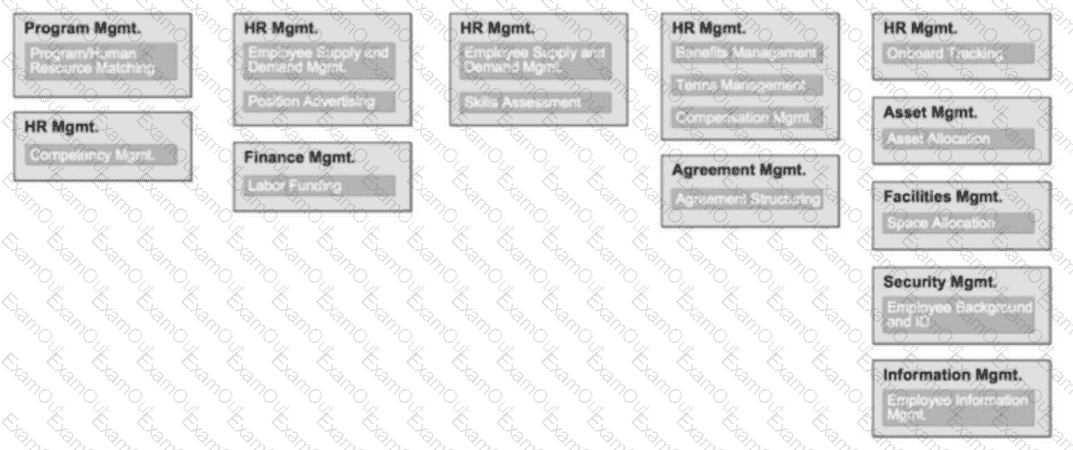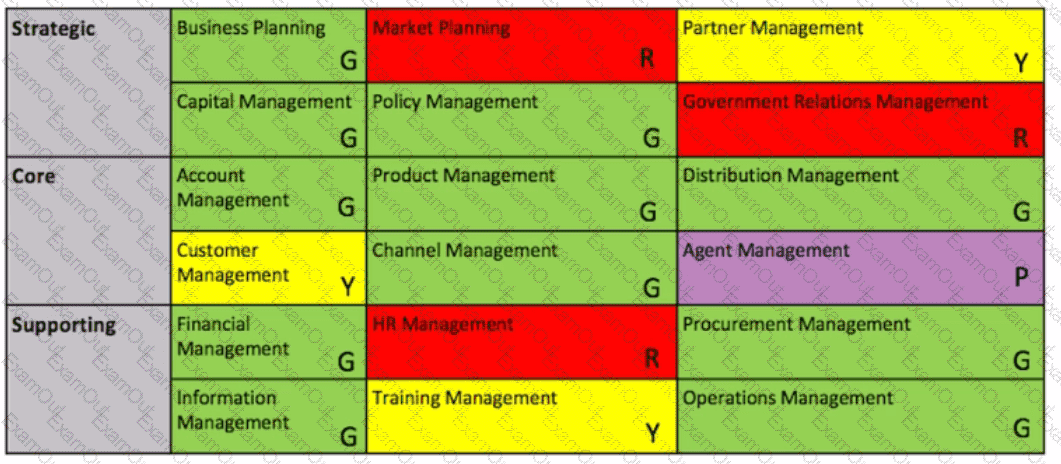Where are business scenarios used most prominently in the TOGAF ADM?
Which of the following is an analysis technique which is used to show a range of different perspectives on the same set of business capabilities?
Which of the following best describes "value” in the context of Business Architecture?
In Phases E and F, what deliverable Includes actions from the Business Transformation Readiness Assessment?
Consider the following output from Phase A:
 What is this an example of?
What is this an example of?
Consider the diagram of an architecture development cycle.
Which description matches the phase of the ADM labeled as item 1?
What are the four architecture domains that the TOGAF standard deals with?
Consider the following business capability map. where cells of a model are given different colors to represent maturity levels (note the letters G, R. Y. P also denote the colors used = Green, Red. Yellow and Purple):

Which of the following best describes this technique?
Which of the following best describes a TOGAF business scenario?
Which approach to model, measure, and analyze business value is primarily concerned with identifying the participants involved in creating and delivering value?

